November 5 is the 60th Anniversary of Vancouver’s last manual telephone exchange. Angus McIntyre writes about its history and the changeover.
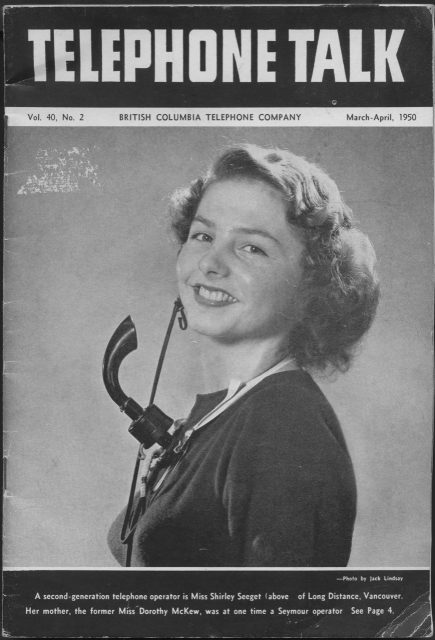
By Angus McIntyre
If you grew up in the City of Vancouver in the 1950s you may well remember your telephone number looked like this: KErrisdale 3457-M. Or ALma 0609-L. These numbers indicated a manual non-dial telephone with a shared party line. The letter at the end of the number indicated the party and 80 percent of Vancouver telephones were party lines. What made Vancouver unique at this time was that it was the largest city in Canada, and likely the USA, that still had operators connecting local calls.
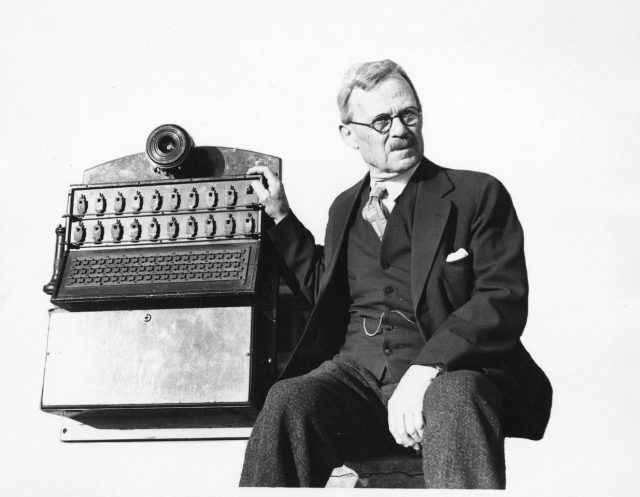
Vancouver’s earliest record of telephone service shows up in the 1888 City Directory as: VANCOUVER CENTRAL TELEPHONE COY., 11 Cordova st., C.S. Tilley, manager.
The company name changed with a move to the Empire building at Seymour and Hastings, and by 1907 the B.C. Telephone Company shows up at 555 Seymour Street in a new building.
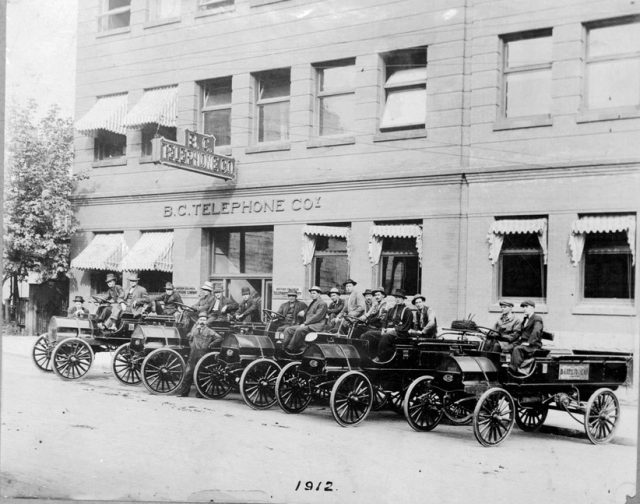
555 Seymour Street in 1912. CVA 99-5033
While most telephone companies in large North America cities converted to dial exchanges in the 1920s and 1930s, Vancouver did not.
B.C. Telephone started the conversion to dial in 1939 and opened the first automatic exchange in a new building on Seymour at Robson in 1941, the same year the Pacific National Exhibition introduced Vancouverites to dial telephones and how to use them.
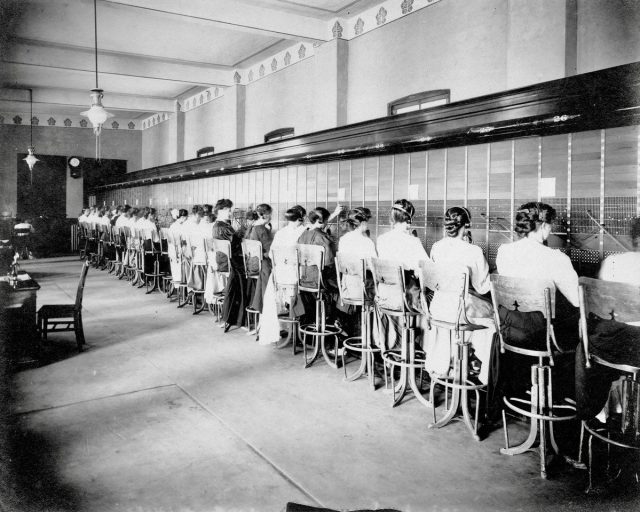
Telephone operators at work in 1907. CVA Bu P498
But World War II delayed further expansion, and changeovers to dial did not start in a major way until the 1950s. Land had to be purchased within a few blocks of the old manual exchange. New dial exchanges were built with large windows to show off the new equipment.
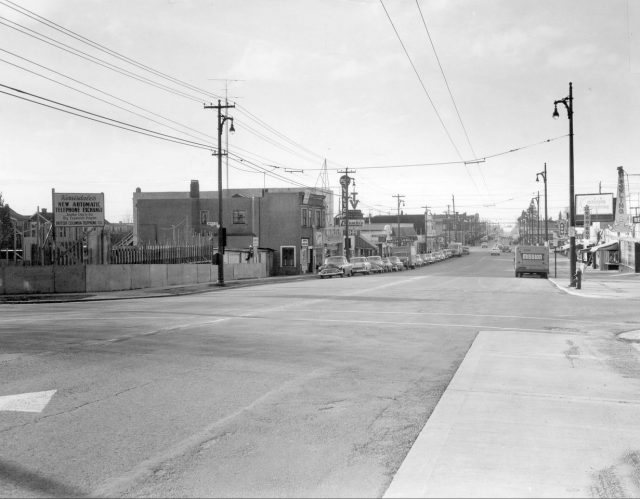
I met many former operators over the years, and they all had wonderful stories. One thing they did to break the routine was to say “Rubber Knees” instead of “Number Please”. They were also known as Hello Girls.
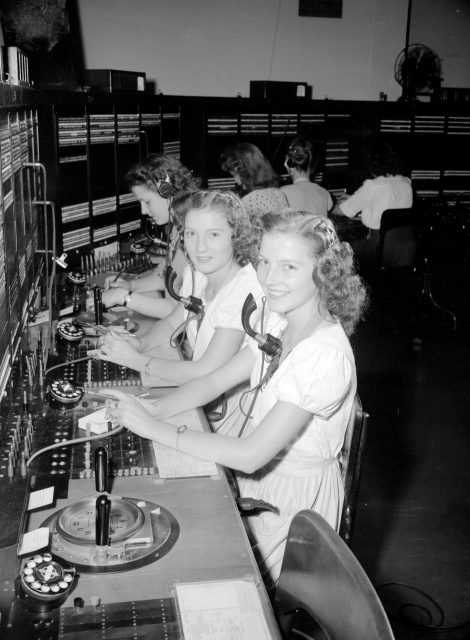
The Calculagraph printed start and finish times for calls on cards by pulling on the levers. Operators used the same vintage headset equipment until 1960.
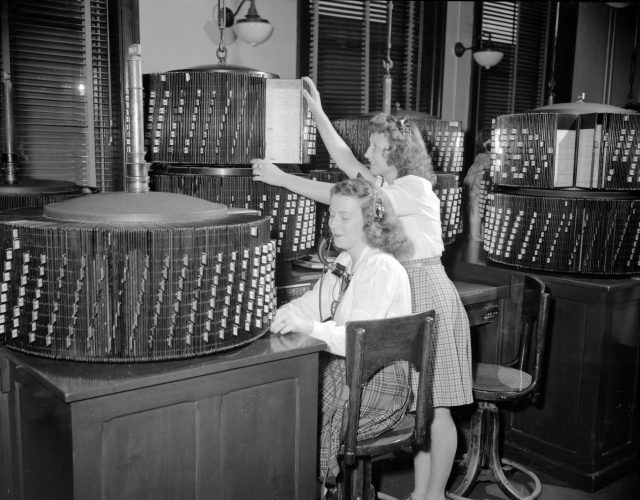
Since demand for telephone service increased after World War II, manual exchanges had to add capacity by expanding switchboards and hiring more operators. A 1950s ad bragged that operator wait time was down to four seconds.
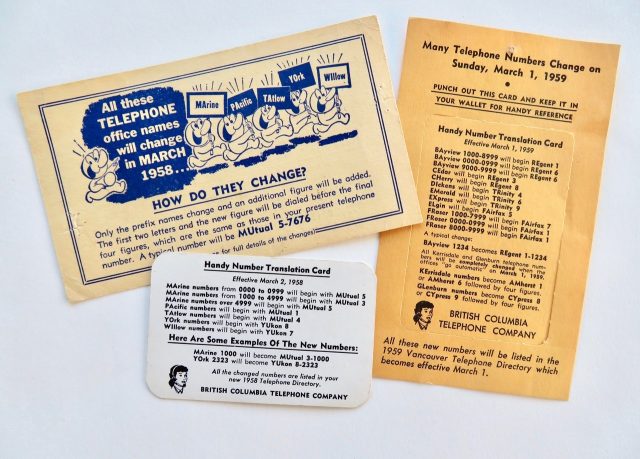
New Westminster, North and West Vancouver and most Lower Mainland communities also converted to dial in the 1950s.
Dunbar/Kerrisdale went dial in 1959, and Point Grey/UBC in 1960.
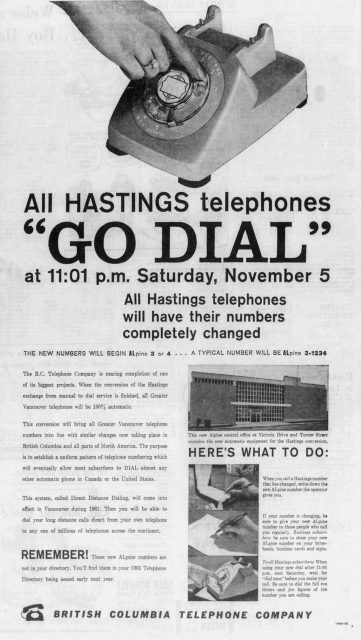
The last manual switchboard in British Columbia was in Ahousat on Vancouver Island, and went dial in 1982.
The City of Vancouver Archives has a Jack Lindsay collection of 135 B.C. Telephone photos from 1948.
Related:


